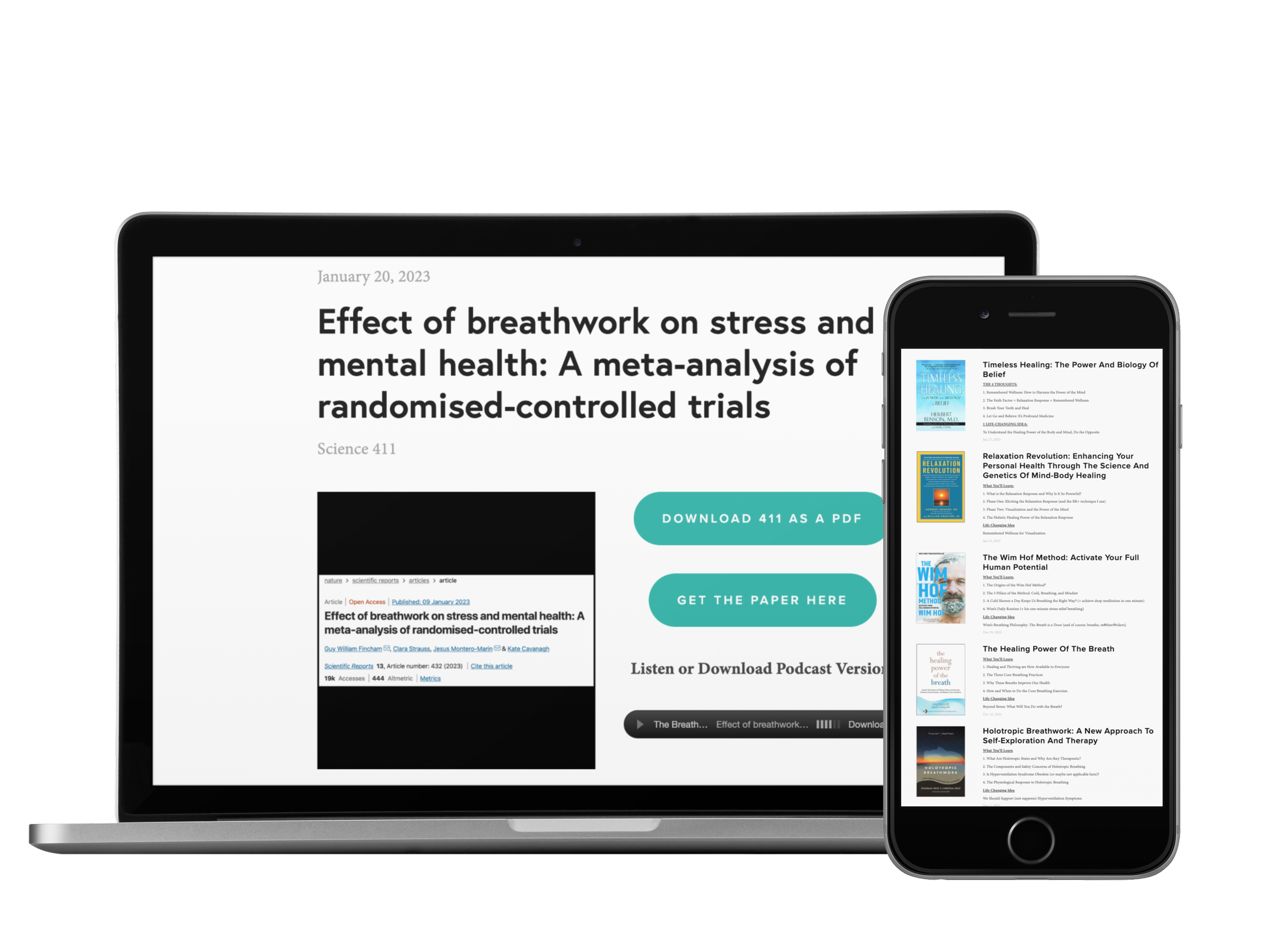Listen Instead of Reading
If you enjoy listening, you can subscribe to the audio version on Spotify, Apple Podcasts, and Audible so you don’t even have to look at the email 😊
Enjoy These Posts?
Reading Time: 1 min 56 sec
I hope the next 29’ish breaths are the most nourishing of your day.
4 THOUGHTS
1. There is No Single Path to a Fulfilling Life
“It may be helpful to receive advice from more experienced artists, but as information, not as prescription…
Established artists generally draw from their personal experience and recommend the solutions that worked for them. These tend to be specific to their journey, not yours. It’s worth remembering that their way is not the way.
Your path is unique, for only you to follow. There is no single route to great art.”
- Rick Rubin, The Creative Act
Likewise, the methods experienced breathing and mindfulness teachers use are specific to their journey, not yours. There is no single path to a fulfilling life.
2. Soak It In: How We End Our Practice Matters
“The way we finish a practice is as important as the doing of it itself. So, as we do the practices in this audio, try to let each breath be an opportunity to practice awareness, and at the end of each practice, take a moment to soak it in, like liquid into a sponge, and that transformative state will then become assimilated within you.”
- Eddie Stern, Healing Through Breathing
That last part is so good for any contemplative practice: “take a moment to soak it in, like liquid into a sponge, and that transformative state will then become assimilated within you.”
If you feel so inspired, give it a try after your next session 🙏
3. Let Nature Meditate You
“This is the huge advantage of water: you don’t need to meditate to take advantage of its healing effects because it meditates you.”
– Wallace J Nichols, Blue Mind
“You don’t need to meditate…because it meditates you.” That’s so good. And it applies to basically any time in nature, not just water.
So, let that excellent quote be motivation to get out in the environment a little more this week 🙏
4. Breath Awareness vs. Breath Control
Breath observation shows you who you are. Breath control shows you who you can be.
Meaning that breath awareness allows us to tune into the state of our body, mind, and spirit. But breath control reminds us that, in many circumstances, we can radically transform how we feel.
1 Quote
“When you learn to stay with the breathing, to sink deep within your consciousness, you find that there is an intrinsic happiness there that has nothing to do with sensual pleasures, and it gives your life a whole new balance.””
1 Answer
Category: Blood Circulation
Answer: These are so narrow that red blood cells must travel single file to pass through them, which also helps maximize contact with air.
…
(Cue the Jeopardy! music.)
…
In good breath,
Nick Heath, T1D, PhD
“Breathing is the compound interest of health & wellness.”
P.S. scroll through for funny breathing memes
P.P.S. Check out The Breathing App for Diabetes to have Eddie Stern and me guide you through a 28-day slow breathing program.
Coaching
I can currently work with one more person if you can meet on weekends. Just send an email to nick@thebreathingdiabetic.com, and we can discuss it further 🙏
Amazon Associate Disclosure
I’ve been recommending books for almost 6 years. Yet somehow, I just discovered that I could be an Amazon affiliate [face-palm]. In any case better late than never. Now, any Amazon link you click is an affiliate link. As an Amazon Associate, I earn from qualifying purchases. So, if you’d like to support my work, buying books through these links is helpful : )
* An asterisk by a quote indicates that I listened to this book on Audible. Therefore, the quotation might not be correct, but is my best attempt at reproducing the punctuation based on the narrator’s pace, tone, and pauses.

